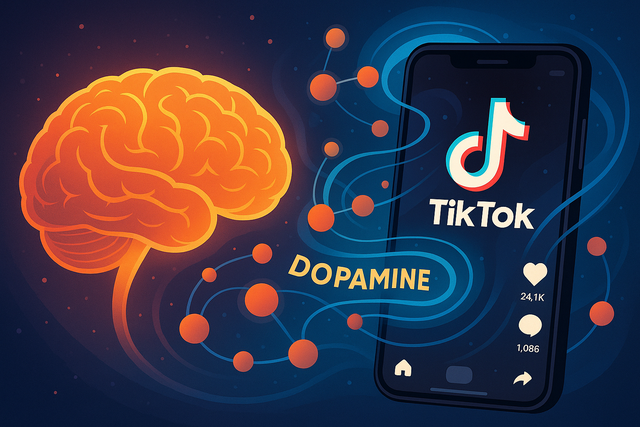
In the age of fast-paced video, where every swipe brings new stimuli, our brains are adapting to the unpredictable pace of viral content. Short videos, sound effects, and breath-taking challenges – all of these elements are designed to boost the circulation of dopamine, the “feel-good” neurotransmitter in the brain.
1. Why do short videos fascinate us?
Fast-paced, stimulating: Each video is 15–60 seconds long, long enough to give the brain an immediate reward without leaving room for boredom.
Sound and visual effects: Click-memories, musical backgrounds, and sound effects shift the centers of attention by signaling "something new is beginning" - and thus we begin to expect the dopamine reward.
Professional issue: viral challenges: When we see others receiving 'likes' and sharing content, the brain registers a positive social experience, which fuels the desire to be part of that scene.
2. What does the Harvard study say?
According to recent research at Harvard University (2024), students who consume more than two hours of short videos per day show:
Decreased patience for longer texts;
Difficulty learning through articles or virtual lectures lasting over 10 minutes;
Increased anxiety when having to focus on tasks uninterrupted for more than 20 minutes.
3. Consequences at work and in relationships
In the workplace: Multi-tasking with multiple windows or jumping from one email to a long tutorial strains the attention span; productivity drops and stress levels rise.
In relationships: When push notifications are preferred over face-to-face conversations, emotional depth and empathy fade.
4. How can we restore the boundaries of attention?
“Screen-free” rituals: Designate 30 minutes in the morning and 30 minutes in the evening without your phone—for light reading, meditation, or just silence.
Pomodoro Technique: 25 minutes of uninterrupted work, then 5 minutes of rest. This cycle helps "train" the brain to stay focused.
Offline task: Do something completely offline once a day – e.g., a walk, cooking without music, or a conversation without a phone call.
5. Conclusion: An evolving brain
Our brains are incredibly adaptive. They follow the rules of what pleases them most at any given moment, and right now, this process is fueled by dopamine through short videos. But with a few conscious strategies, we can restore our attentional balance, regenerate our ability to get into “flow” and maintain depth in our learning, work and relationships. Ultimately, our challenge is not to stop technology, but to train our brains not to lose themselves in repetition.





